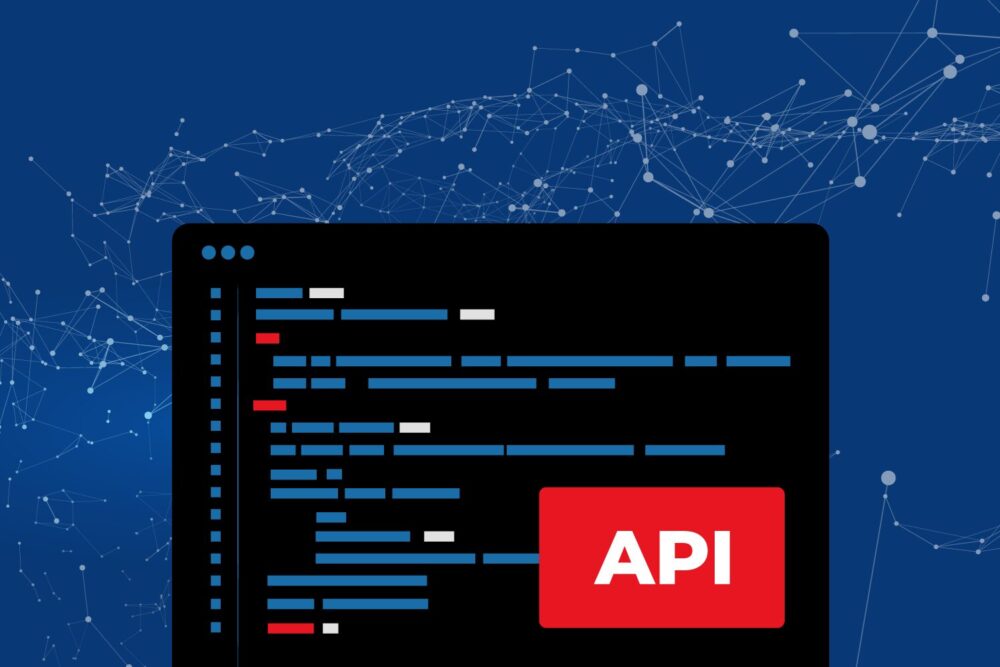Imagine a world where financial data flows seamlessly, like a river of knowledge, right into the palm of your hand.
With the power of APIs, this vision becomes a reality. APIs, or Application Programming Interfaces, are the invisible threads that connect different systems, allowing financial information to be accessed and utilized with ease.
In this discussion, we will explore how APIs have revolutionized the way we interact with financial data, the benefits of integrating APIs into financial systems, and the exciting potential that lies ahead.
Get ready to unlock the true potential of financial data at your fingertips.

The Definition and Functionality of APIs
APIs, or Application Programming Interfaces, are powerful tools that enable different software systems to communicate and interact with each other, facilitating the seamless exchange of data and functionality. APIs aren’t only limited to the technology industry; they’re also extensively used in other industries such as finance, healthcare, and transportation.
In finance, APIs have revolutionized the way financial data API is accessed and utilized. One of the major advantages of using APIs for data integration in the financial industry is the ability to access real-time data from various sources. This allows financial institutions to make informed decisions and react quickly to market changes. APIs provide a standardized way of accessing data, making it easier for different systems to interact and share information.
Another advantage of using APIs is the ability to automate processes and workflows. By integrating different systems through APIs, financial institutions can streamline their operations and reduce manual intervention. This not only improves efficiency but also reduces the risk of errors and improves data accuracy.
Furthermore, APIs enable financial institutions to offer innovative services to their customers. By leveraging APIs, they can integrate with third-party applications and provide personalized experiences to their customers. This opens up new business opportunities and enhances customer satisfaction.
How APIs Revolutionize Financial Data Access
Financial data access has been revolutionized by the power of APIs. APIs play a crucial role in providing secure and efficient access to financial data. Data security is a top concern in the financial industry, and APIs offer a secure way to transfer and access sensitive information. They use encryption and authentication protocols to ensure that data is protected from unauthorized access and tampering.
However, API integration can come with its own set of challenges. One of the main challenges is ensuring compatibility between different systems and platforms. APIs need to be integrated seamlessly into existing infrastructure, which can require significant time and effort. Additionally, maintaining API integrations and ensuring their ongoing compatibility can be a complex task.
To address these challenges, financial institutions can adopt solutions such as standardized API frameworks and protocols. These frameworks provide a common language for different systems to communicate and integrate with each other. They also offer pre-built integration modules and tools that simplify the integration process.

Benefits of Integrating APIs for Financial Data
Now let’s explore the advantages that come with integrating APIs for financial data, enabling seamless access and secure transfer of information.
By integrating APIs, you gain access to real-time market data, allowing you to make informed decisions quickly. With real-time data, you can stay updated on market trends and react promptly to changes, giving you a competitive edge.
APIs also provide a secure way to transfer financial data. They come equipped with robust security measures to protect sensitive information. Encryption protocols and authentication mechanisms ensure that data is transmitted securely, safeguarding it from unauthorized access or tampering. This enhances the trustworthiness of the data and provides peace of mind to both users and businesses.
Moreover, integrating APIs for financial data improves operational efficiency. APIs enable seamless integration with existing systems, eliminating the need for manual data entry and reducing the risk of errors. This streamlines processes, saving time and resources.
Additionally, APIs allow for easy scalability, making it easier to handle increased data volumes and adapt to changing business needs.
Exploring Different Types of Financial APIs
Different types of financial APIs offer a range of functionalities and services to cater to specific needs in the financial industry. Exploring API technology can help banks and other financial institutions streamline their operations, enhance customer experience, and drive innovation.
One type of financial API is the payment API, which enables secure and seamless transactions between different parties. This type of API is commonly used by banks and payment processors to facilitate online transactions, mobile payments, and peer-to-peer transfers.
Another type is the market data API, which provides real-time and historical financial data such as stock prices, exchange rates, and market indices. This API is often used by financial advisors, traders, and investment firms to make informed decisions and monitor market trends.
Additionally, there are APIs that focus on identity verification and authentication, enabling financial institutions to establish trust and prevent fraud. These APIs use various methods such as biometrics, facial recognition, and document verification to ensure the identity and security of customers.

The Future of APIs in the Financial Industry
APIs are shaping the future of the financial industry by revolutionizing the way institutions operate, collaborate, and innovate. One key aspect of this future is the focus on API security in the financial industry. As financial institutions increasingly rely on APIs to exchange sensitive customer data and conduct transactions, ensuring the security of these APIs becomes paramount. Robust security measures, such as authentication and encryption, are being implemented to protect against data breaches and unauthorized access.
Another significant role of APIs in the financial industry is enhancing customer experience. APIs enable seamless integration between financial institutions and third-party applications, allowing customers to access a wide range of services and information from a single platform. By leveraging APIs, customers can conveniently manage their accounts, make payments, and access personalized financial advice, all within the applications they already use and trust. This level of integration not only improves convenience but also empowers customers by giving them greater control over their financial lives.
Frequently Asked Questions
What Are the Potential Risks or Security Concerns Associated With Using APIs for Financial Data Integration?
When using APIs for financial data integration, there are potential risks and security concerns to consider. These include data privacy and the possibility of data breaches, which can compromise sensitive financial information.
How Can Businesses Ensure the Accuracy and Reliability of the Financial Data Obtained Through Apis?
To ensure accuracy and reliability of financial data obtained through APIs, you must implement data validation and verification processes. This involves cross-referencing data with multiple sources, conducting regular audits, and using secure authentication methods.
Are There Any Regulatory or Compliance Considerations That Need to Be Taken Into Account When Using Financial Apis?
When using financial APIs, you must consider regulatory compliance and data privacy. Ensure that your business adheres to all relevant regulations and safeguards customer information to maintain trust and avoid legal consequences.

Can APIs Be Customized or Tailored to Specific Business Needs or Requirements?
Yes, APIs can be customized to meet your specific business needs and requirements. With a wide range of customization options and integration flexibility, you can tailor the API to seamlessly integrate into your existing systems and workflows.
Are There Any Limitations or Drawbacks to Using APIs for Financial Data Access and Integration?
Using APIs for financial data access and integration has limitations and drawbacks. These may include security risks, potential data breaches, and dependency on third-party providers. It’s important to weigh these factors before implementing an API solution.





